Kerala Style Fish Curry with Coconut Milk is a simple, quick dish ready in 30 minutes. Most people love fish, but the strong smell keeps them away. This curry fixes that. Coconut milk, kudampuli, and spices reduce the smell without losing any flavor.
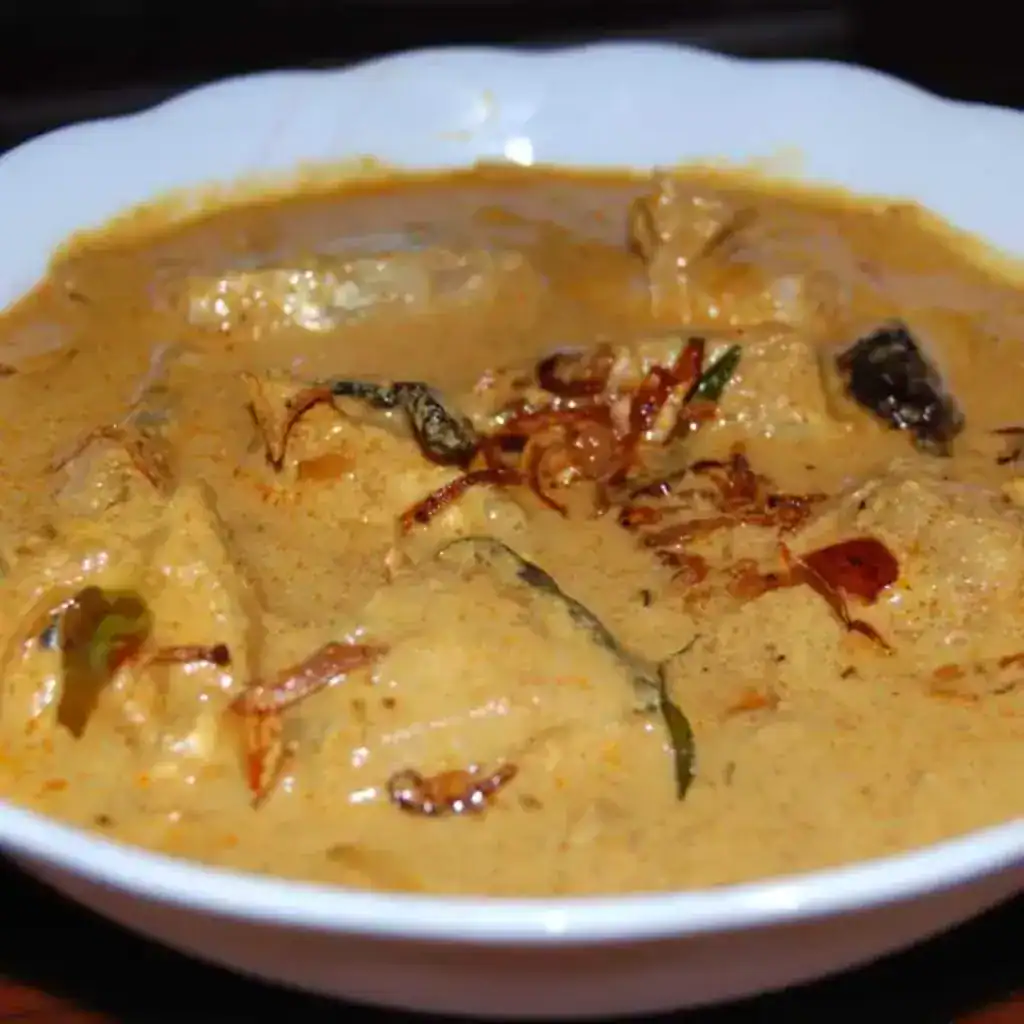
No complex steps. Just homely cooking with pantry staples. Scroll down for fresh ingredients, step-by-step recipe, serving tips, and storage instructions.
Jump to:
- What is Kerala Style Fish curry with Coconut Milk?
- Why You'll Love This Recipe?
- Recipe Ingredients
- Variations to Try
- How To Make Kerala Style Fish Curry with Coconut Milk (Step-by-Step Guide)
- Tips And Tricks
- Serving Suggestions
- Storage Instructions
- Frequently Asked Questions (FAQ)
- More Kerala Curries Made with Coconut Milk
- Kerala Style Fish curry with Coconut Milk
What is Kerala Style Fish curry with Coconut Milk?
Kerala-style fish curry with coconut milk is a creamy variation of nadan meen curry. It uses the same spice base and souring agents like kudampuli. The only difference is the addition of coconut milk, which softens the flavor and gently thickens the curry.
The curry has a yellowish-brown color. The smell of coconut milk and tempered curry leaves comes through first. A light aroma of cooked fish follows. It tastes creamy, slightly spicy, and soothing.
Fish and coconut milk go well together in many cuisines. You’ll find similar curries in Mangalore, Bengal, Thailand, and Sri Lanka. But Kerala’s version stands out because of kudampuli. When creaminess, sourness, and spice blend with tempered curry leaves, it brings out the true taste of Kerala.
Why You'll Love This Recipe?
You’ll love this recipe for its aroma and taste. It’s not like regular meen (fish) curry. This one is creamy, mildly spicy, and smells fresh with only a light fish hint.
Kudampuli brings the right sourness. Coconut adds body and a touch of sweetness. Spices give depth and balance to the flavor.
It’s a quick curry that pairs well with rice, pathiri, chapati, or anything you have on hand.
If you enjoy fish and coconut-based curries, you’ll also love our Kerala Style Fish Stew. It follows a different cooking technique and has a milder, uniquely comforting taste.
Recipe Ingredients
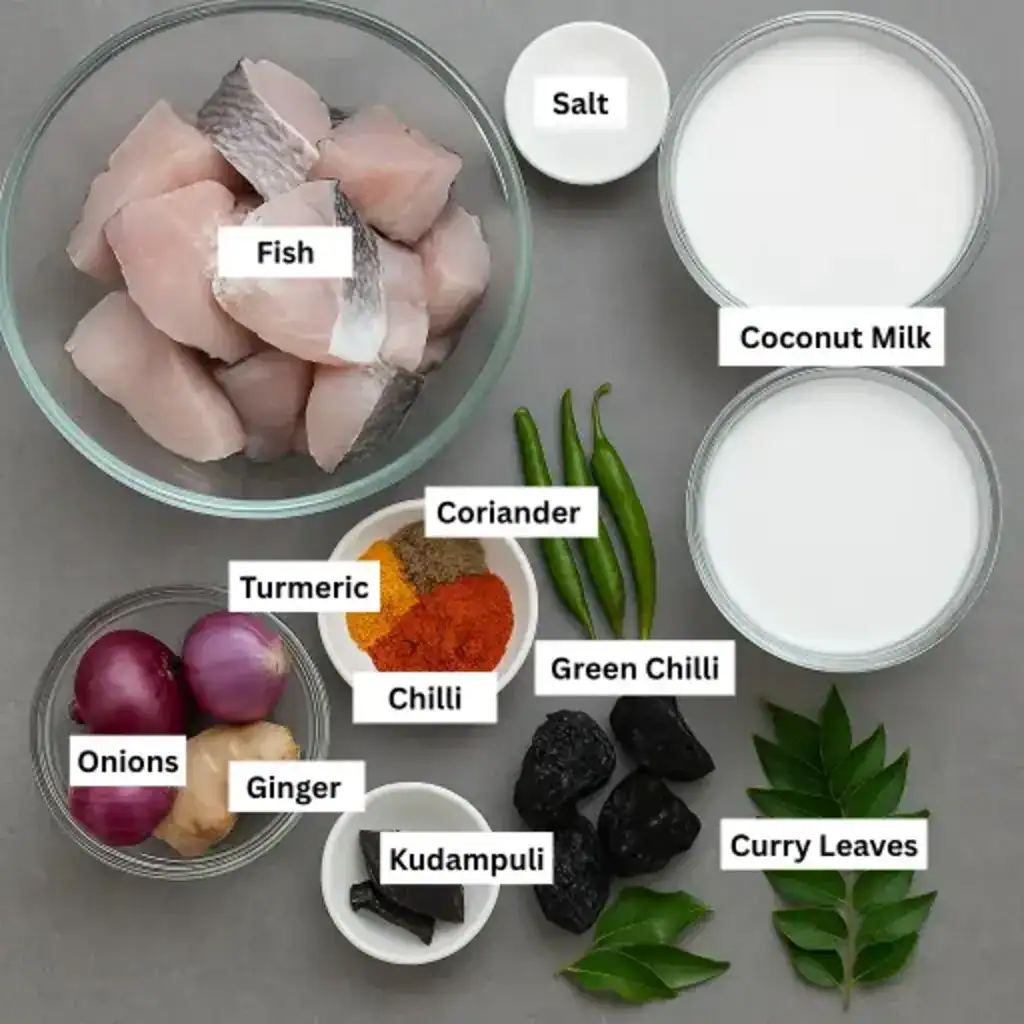
1. Fish
Use any type of fish. Adjust the cooking time based on the variety. Some fish may break easily if overcooked. Avoid bony types, especially for kids.
2.Cucum / Kudampuli (Malabar Tamarind)
A sun-dried sour fruit used in Kerala fish curries. It gives a sharp tang and depth to the gravy. Soak it before cooking to release the full flavor.
3. Coconut Milk
This recipe uses both thick and thin coconut milk. Thick milk is the first extract from freshly grated coconut. Thin milk is the second extract made by blending the same coconut again with more water. If grating is not possible, you can use desiccated coconut, coconut milk powder, canned coconut milk, or packed coconut paste.
4. Other Ingredients
Small onion (shallots), ginger, green chilli, turmeric powder, chilli powder, coriander powder, curry leaves, and salt. Exact measurements and steps are listed in the recipe card below.
Variations to Try
If you want a richer, more intense flavor, skip the coconut milk and use roasted coconut instead. Lightly roast grated coconut with a few spices, grind it into a paste, and add it to the curry.
This version is called varutharacha meen curry. You can also make it with prawns, known as Varutharacha Chemmeen Curry.
For a different kind of sourness, replace cucum with dried mango (manga puli), raw mango, or regular tamarind. Each one gives the curry its own unique finish.
How To Make Kerala Style Fish Curry with Coconut Milk (Step-by-Step Guide)
- Soak cocum (kudampuli) in 4 tablespoons salted lukewarm water for 15 - 20 minutes.
- Heat oil in a pan. Sauté small onion, ginger, green chilly, and curry leaves.
- Once the onion turned light brown, add turmeric, chili, and coriander powder. Keep it on a low flame. Sauté it well.
- Add thick and medium coconut milk. Add water in which cocum was soaked. Taste the mixture and add soaked cocum pieces as required. Add enough salt. Keep it on a low flame.
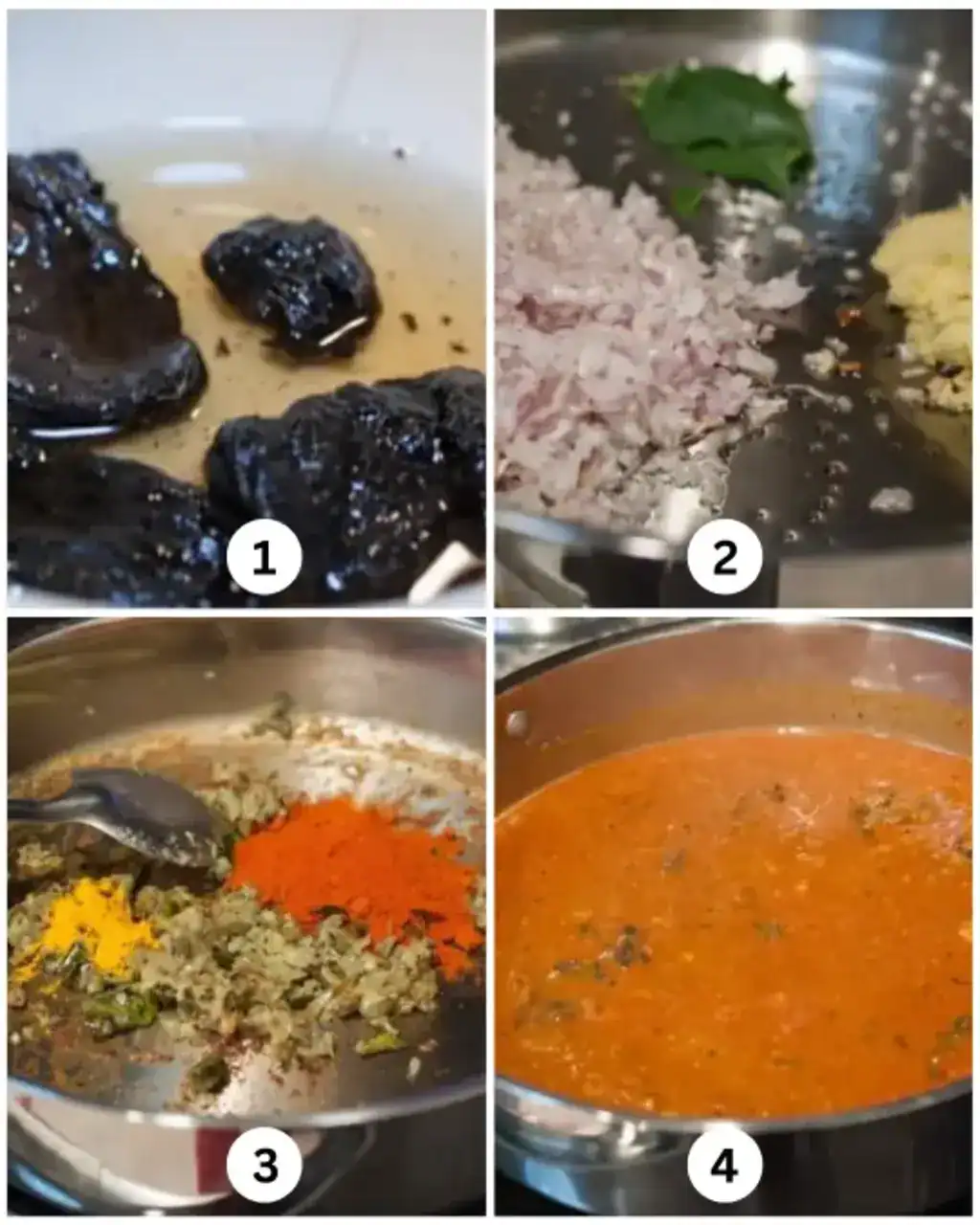
- Bring it to a boil and then add cleaned fish pieces. Cook it till the fish gets cooked and the gravy is consistent. It would take around 20 minutes.
- Garnish with fried small onions and curry leaves.
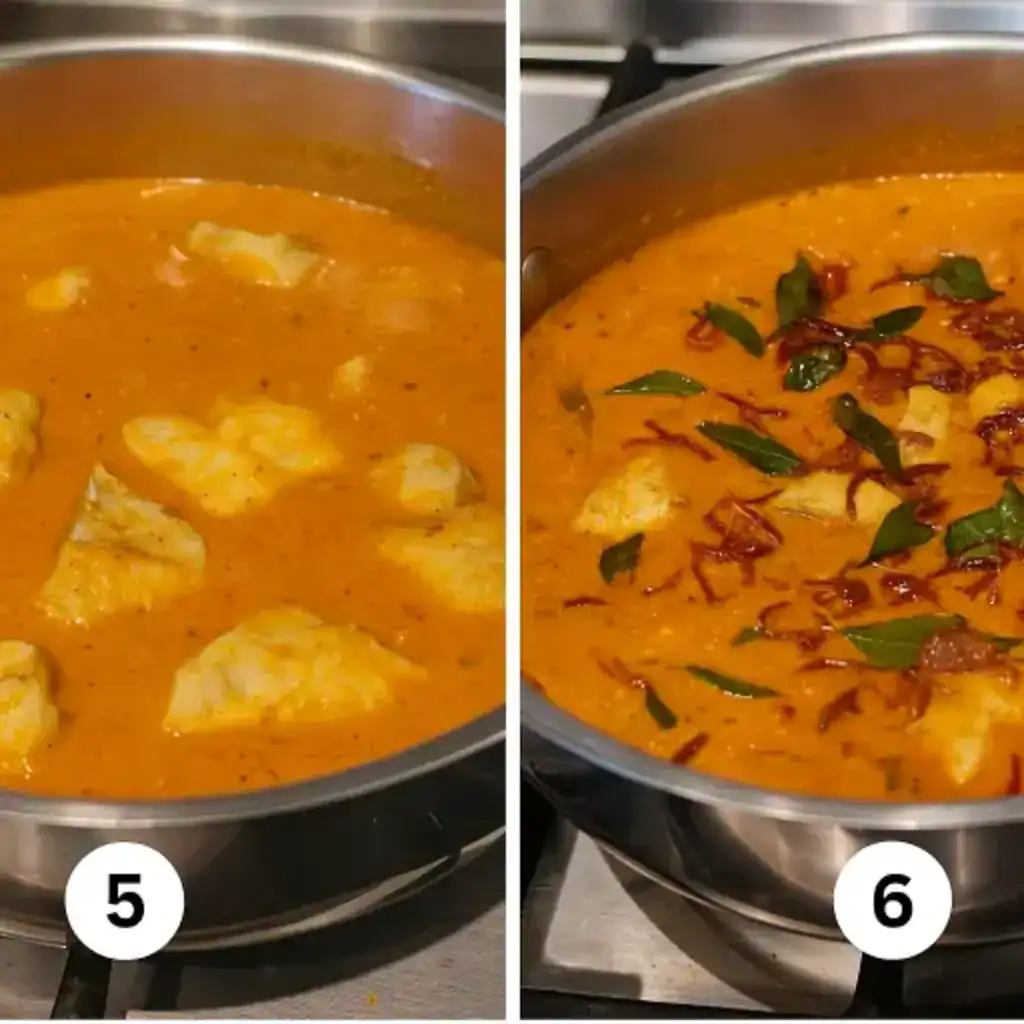
The next coconut milk based Kerala curry you may enjoy is Kerala Style Egg Curry with Coconut Milk. It’s simple, flavorful, and loved for its coconut-rich gravy.
Tips And Tricks
- Try making this curry in a clay pot (manchatti) for better flavor. Always clean and season the pot before use.
- Avoid using high flames. Spices can burn and turn bitter, coconut milk may split, and fish can break if cooked too fast.
- If using frozen fish, always thaw it fully before cooking. Wash it last with a little salt to remove any smell, scales, or dirt. Once added to the curry, avoid stirring too much. Both overhand ling and poor thawing can cause the fish to break.
Serving Suggestions
This curry pairs best with rice. You can serve it with matta rice, basmati rice, or ghee rice. For a full Kerala-style meal, try it with matta rice, a cabbage /beans thoran, some pappadam, and a side of Nadan Meen Varuthathu.
It also goes well with pathiri, orotti, or even chapati. Soaking chapati in the gravy gives a soft texture and rich flavor.
You can also serve this with appam, idiyappam, or puttu. The curry adds body and flavor to each of these Kerala staples.
Storage Instructions
Kerala Style Fish Curry with Coconut Milk tastes even better the next day. The gravy thickens, and the sourness from the kodampuli settles in deeper. Reheat gently on low flame when needed. Sudden heat can affect both the fish texture and the coconut milk.
Store the curry in a clean, airtight container in the fridge. It stays fresh for 2 to 3 days.
Freezing is possible but not recommended. Coconut milk can split or turn grainy after thawing. The fish's texture and smell may change.
Frequently Asked Questions (FAQ)
A bitter taste usually comes from burnt spices. If you sauté on high heat or over-fry chilli or turmeric powder, it can burn quickly and turn the curry bitter.
Fish can break if you stir too much after adding it. It also happens with soft fish types, frozen fish with improper thawing, or if it's overcooked.
More Kerala Curries Made with Coconut Milk
I’d love to hear your thoughts if you have tried this! Please leave a ⭐️ rating and a comment below. Don’t forget to share your photos on Instagram and tag @a_little_bit_of_spice.
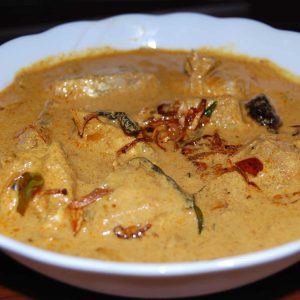
Kerala Style Fish curry with Coconut Milk
Ingredients
- ½ Kilogram fish
- 5 shallot / small onion
- 1 Teaspoon ginger
- ½ Cup Thick coconut milk
- 1 Cup Medium thick coconut milk
- 4 green chilli
- ½ Teaspoons turmeric powder
- 2 Teaspoons Chilly powder
- 2.5 Teaspoons coriander powder
- 4 Cocum ( Kudam Puli)
- curry leaves
- salt
Instructions
- Soak cocum (kudampuli) in 4 tablespoon salted luke warm water for 15 - 20 minutes.
- Heat oil in a pan. Saute small onion , ginger , green chilly and curry leaves.
- Once onion turned light brown, add turmeric, chilly and coriander powder. Keep it in low flame. Saute it well.
- Add thick and medium coconut milk. Add water in which cocum was soaked. Taste the mixture and add soaked cocum pieces as required. Add enough salt. Keep it in low flame.
- Bring it to boil and then add cleaned fish pieces. Cook it till fish gets cooked and gravy is consistent. It would take around 20 minutes.
- Garnish with fried small onions and curry leaves.
Notes
- Try making this curry in a clay pot (manchatti) for better flavor. Always clean and season the pot before use.
- Avoid using high flames. Spices can burn and turn bitter, coconut milk may split, and fish can break if cooked too fast.
- If using frozen fish, always thaw it fully before cooking. Wash it last with a little salt to remove any smell, scales, or dirt. Once added to the curry, avoid stirring too much. Both overhand ling and poor thawing can cause the fish to break.
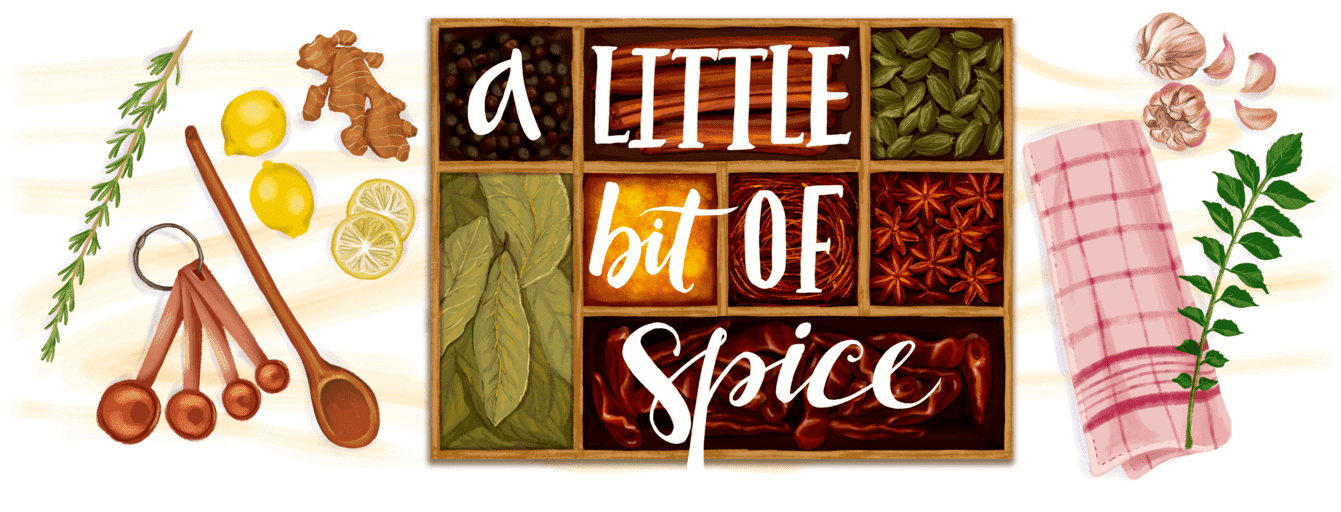

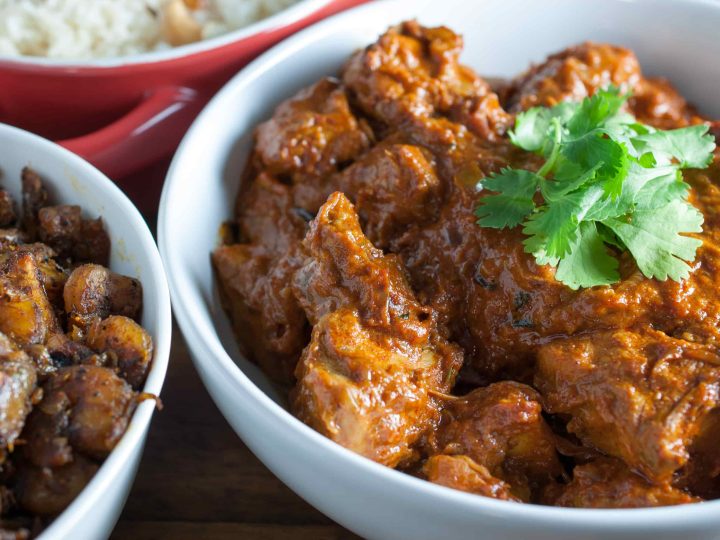



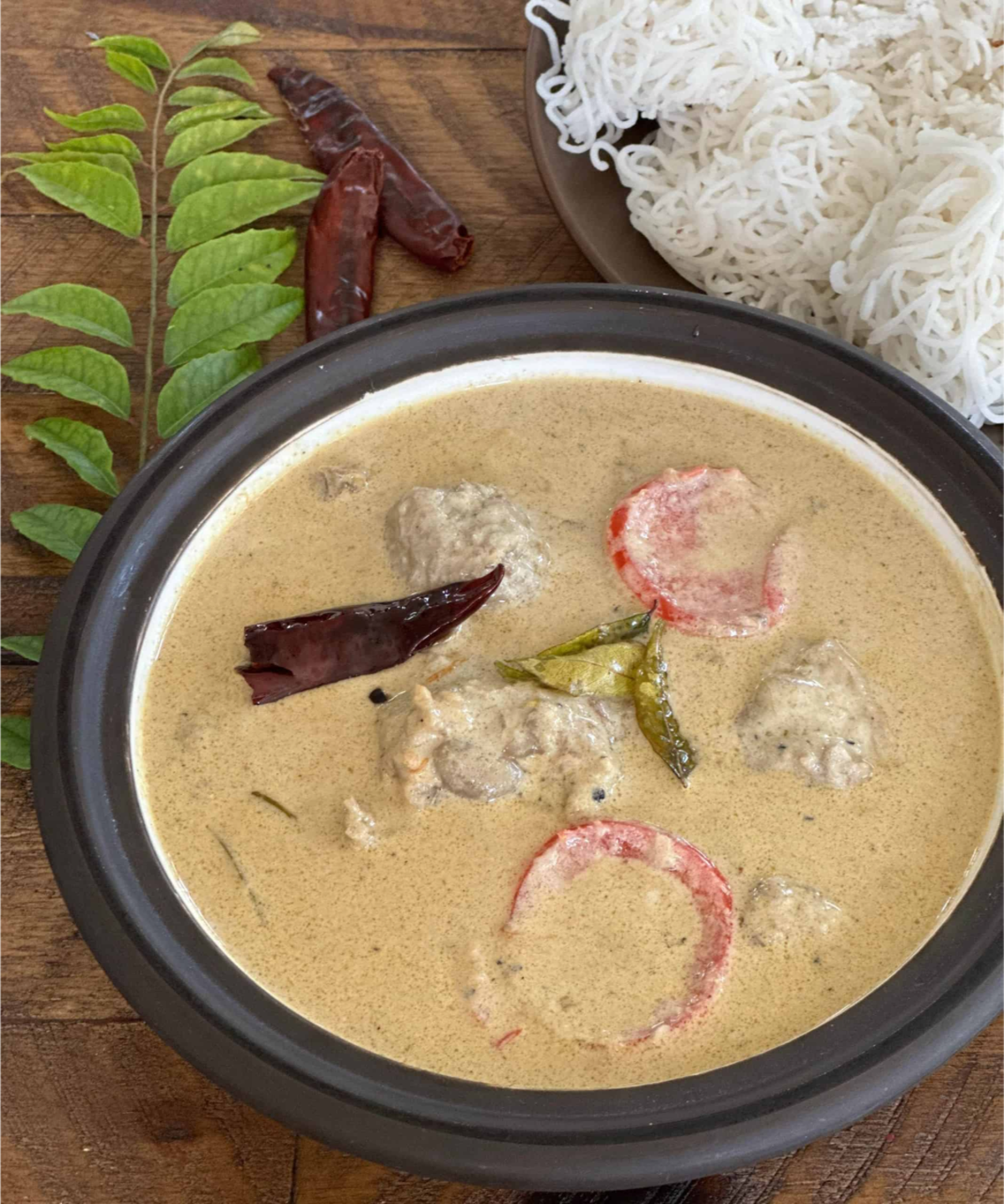
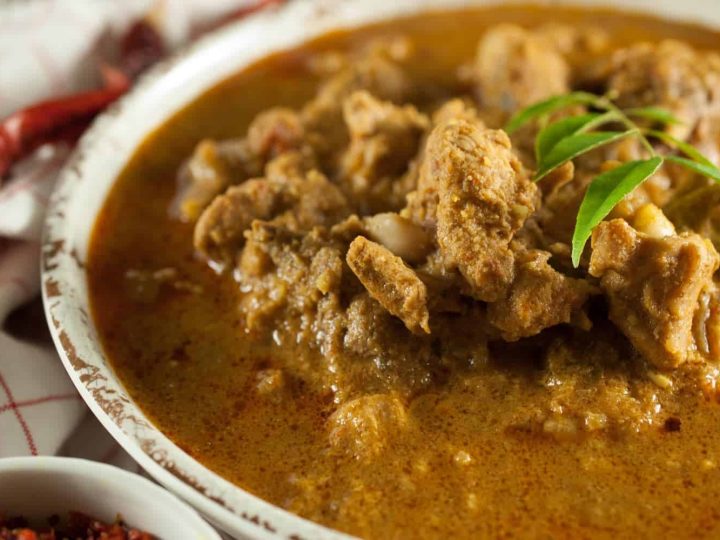


do we add thick milk along with medium milk. wont it get curdled?
@Rinu, You can add thick and medium milk together. Make sure that , you keep it in low flame throughout. And just stir it in between.
Looks Yum!
Thanks Alagu :)
Hi! can I substitute kudampuli with tamarind paste?
Sorry Uma, I haven’t tried with tamarind paste. But I think it should be okai